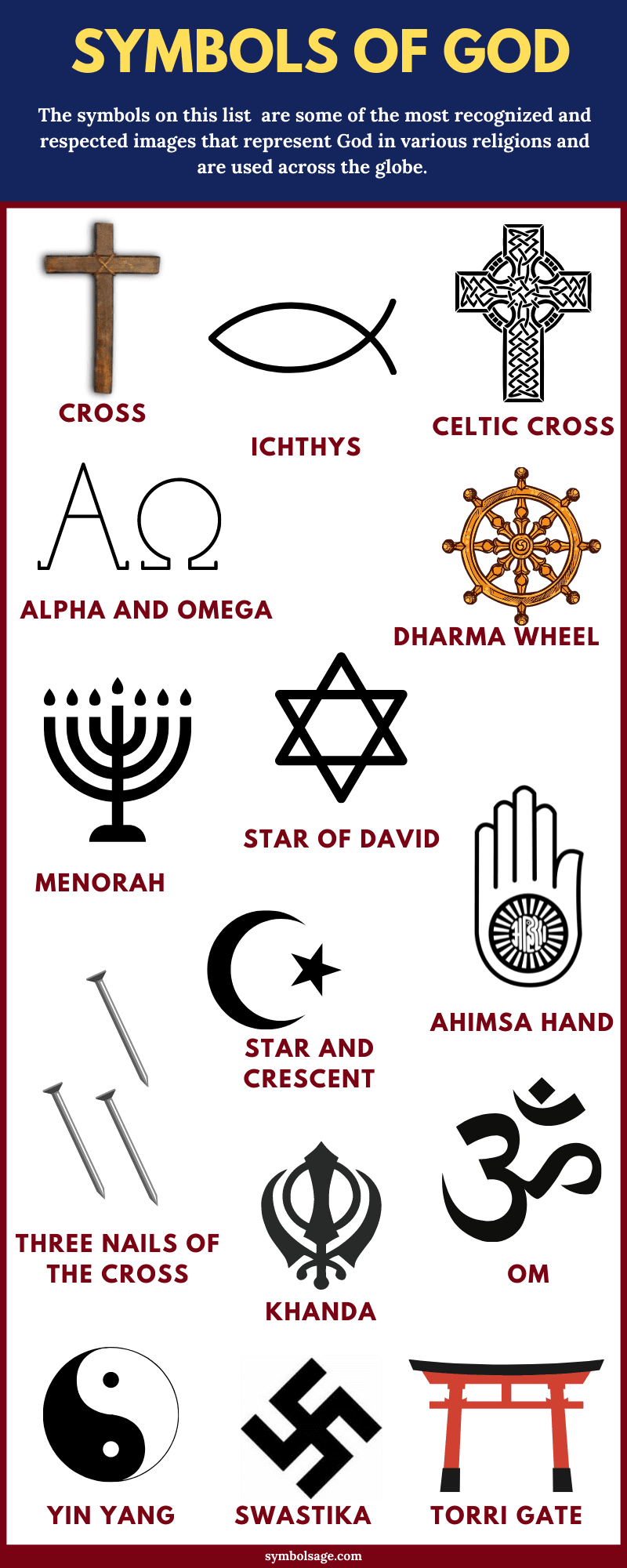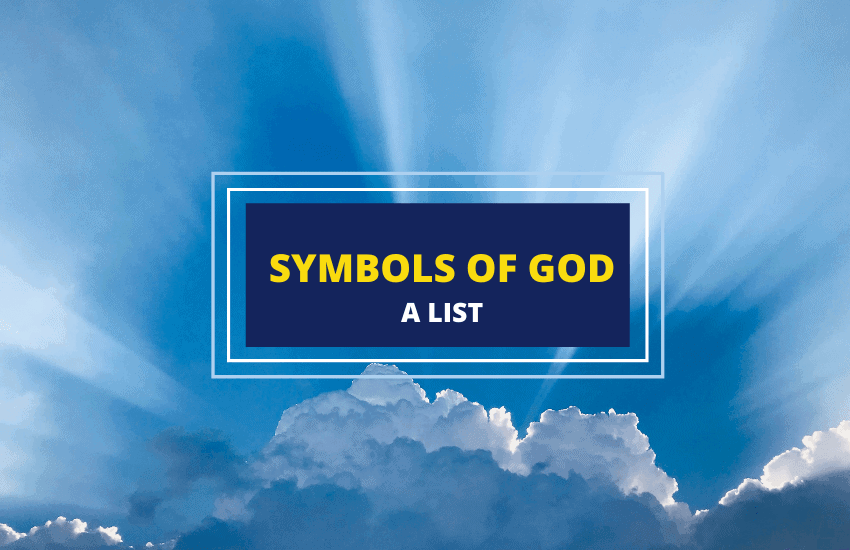
Table of Contents
For humans, belief in a superior being (or God) is a way of life, ingrained in their nature often from birth. Throughout history, humans have continued to submit to ‘God’, the unknown power believed to have created the world.
Every civilization in every part of the world has had their own deities to worship and mythologies to believe in.
Here’s a look at some of the most popular religious symbols used to represent God, their meanings, and how they came into existence.
1. The Latin Cross
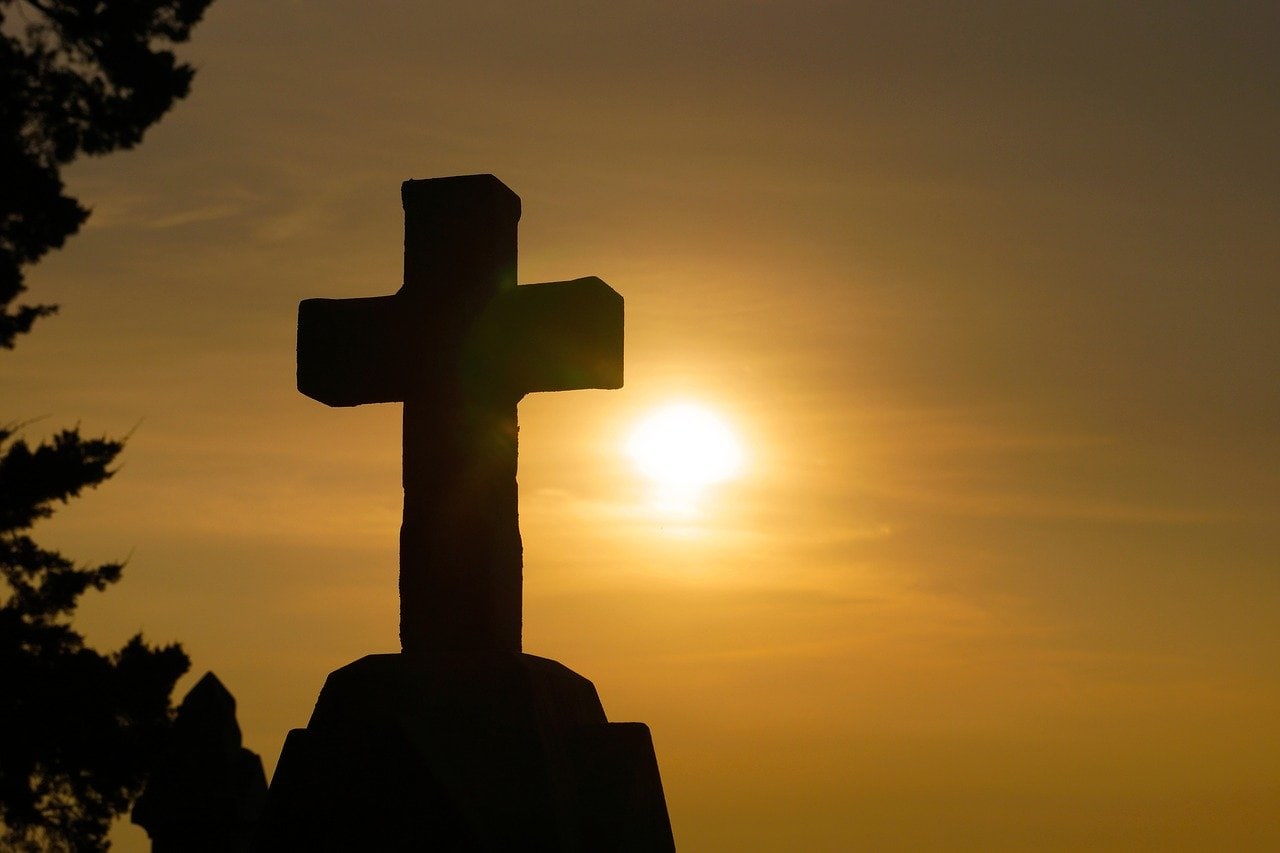
The Latin Cross is the most widely recognized Christian symbol, representing salvation and the redemption of humanity by Jesus Christ, as well as his crucifixion.
Believed to predate Christianity by a few thousand years, the cross was originally a pagan symbol. The Egyptian ankh is a version of the cross, used thousands of years before Christianity.
The cross symbol became associated with Christianity during the reign of Emperor Constantine, about 300 years after the time of Jesus. Constantine converted to Christianity and abolished crucifixion as a form of punishment for crimes.
After this, the cross became a Christian symbol, representing the crucifixion of Jesus Christ.
The Latin cross is also said to represent the Holy Trinity. The two horizontal arms symbolize the Father and the Son, the shorter vertical arm represents the Holy Ghost, while the lower half of the vertical arm signifies their Unity.
2. Ichthys Fish
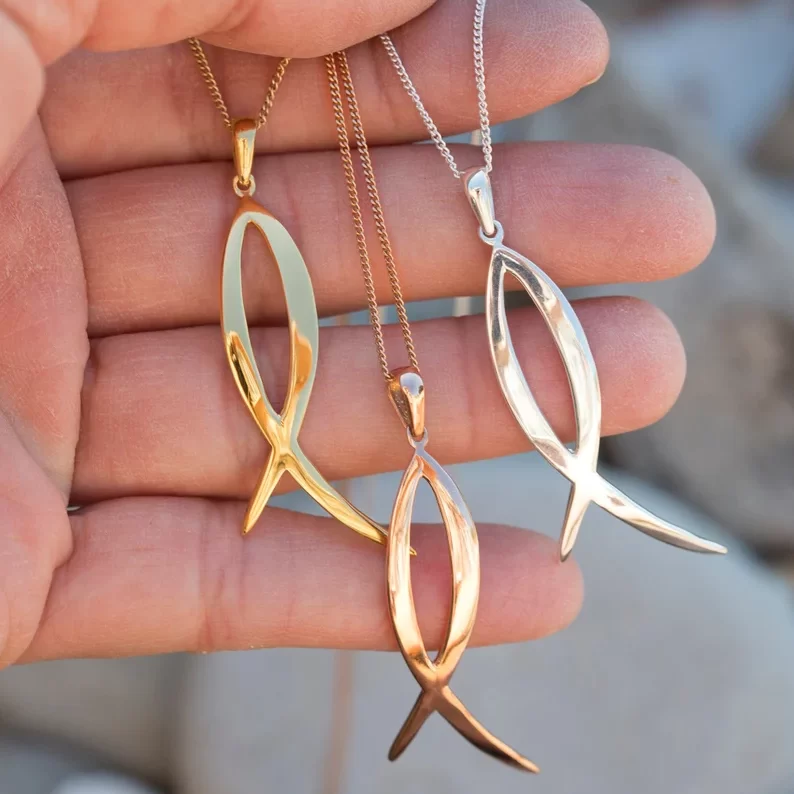
The ichthys, Greek for fish, is an early Christian symbol, resembling the profile of a fish. Initially a pagan symbol, the ichthys was chosen by Christians to identify each other during the time of the Roman persecution of Christians.
The ichthys was used by Christians to indicate secret meeting places where they could worship together. It was seen on doors, trees, and tombs, but as it was also a pagan symbol, its association with Christianity remained hidden.
There are several mentions of fish in the Bible, which has given the ichthys symbol various associations. The symbol is associated with Jesus as it represents Jesus as the ‘fisher of men’, while the word is believed to be an acrostic spelling out Jesus Christ, Song of God, Savior.
The story of how Jesus fed 5,000 people with two fish and five loaves of bread also associated the fish symbol with blessings, abundance, and miracles.
3. The Celtic Cross
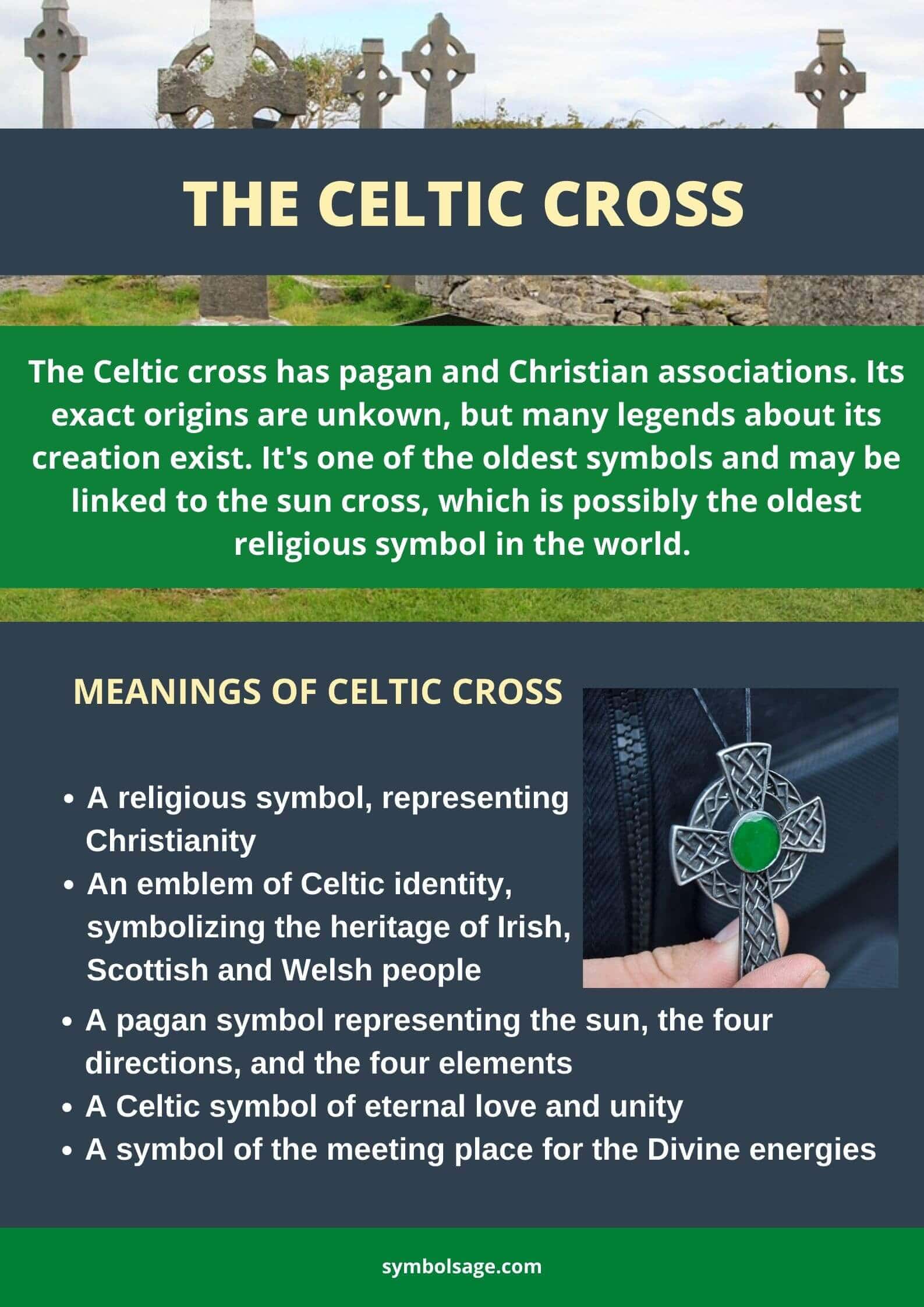
The Celtic cross resembles a Latin cross with a halo around the intersection of the stem and arms. Some say that the cross placed on top of the circle is symbolic of Christ’s supremacy over the pagan sun.
As it has no beginning or end, the halo symbolizes god’s endless love, and many believe that it also resembles the halo of Christ.
According to legend, the Celtic cross was first introduced by St. Patrick when he was in Ireland converting pagans to Christianity.
It’s said that he created the cross by combining the pagan sun with the Latin cross to give those who have newly converted an understanding of its importance.
In the 19th century, the ringed cross was increasingly used in Ireland and today, it’s a traditional Christian symbol of Irish pride and faith.
4. Alpha and Omega
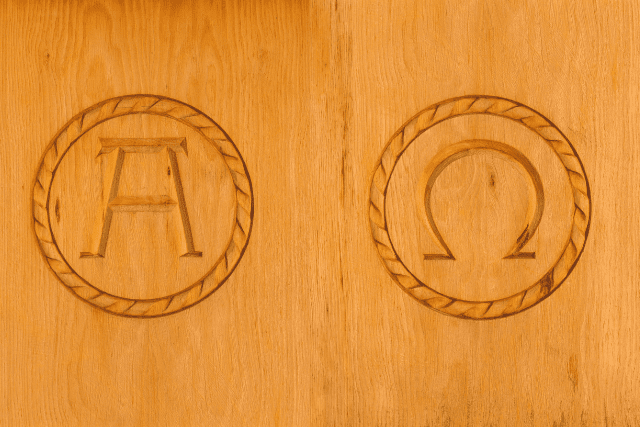
The first and last letters of the Greek alphabet, Alpha and Omega are used together as a Christian symbol to represent God.
According to the book of Revelation, Jesus stated that he was the Alpha and Omega, meaning that he is the first and the last. He existed long before anything else and he will continue to exist even after everything else ceases.
The Alpha and Omega have been in early Christianity and have been found depicted in the Roman catacombs, Christian art, and sculptures.
5. The Three Nails of the Crucifixion

Throughout history, the nail has been closely associated in Christianity with the crucifixion of Jesus Christ.
An important symbol of the Christian faith, the three nails of the crucifixion featuring one tall nail in the center with a shorter nail on either side, symbolize Jesus’ passion, the suffering he endured, and his death.
Today, some Christians wear nails as an alternative to the Latin cross or the crucifix. However, most evangelical Christians view the nail as a symbol of the Devil.
6. Menorah
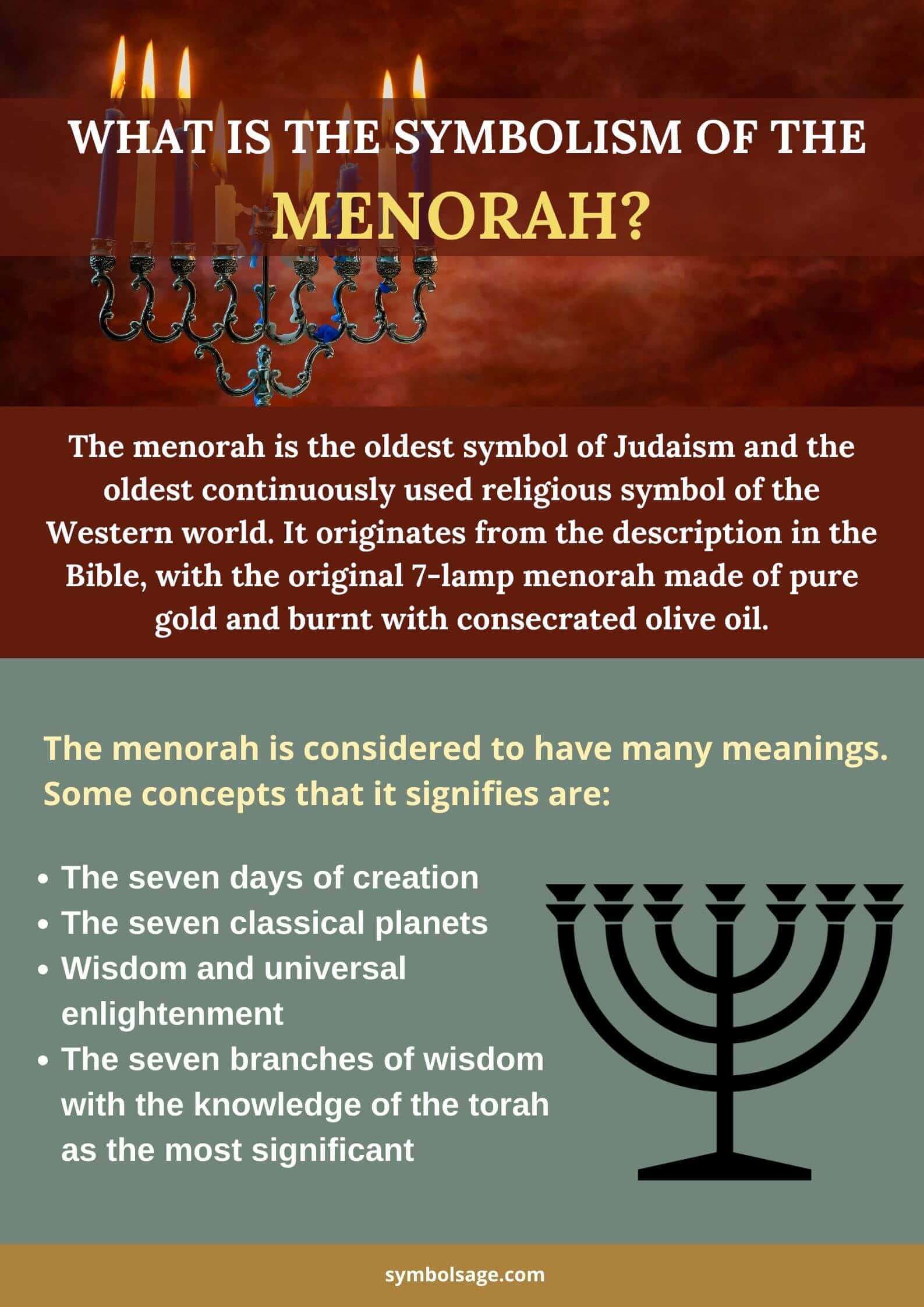
A well-known symbol of the Jewish faith, the Menorah resembles a candelabrum with seven lamps used by Moses in the wilderness. The center lamp represents God’s light while the other six lamps signify the various aspects of knowledge.
The lamps are also said to symbolize the seven planets and the seven days of creation, with the central lamp representing the Sabbath.
As a whole, the Menorah is symbolic of spiritual and physical illumination, denoting universal enlightenment. It’s also strongly associated with the Jewish Festival of Lights, known as Hannukah.
A highly prominent symbol of the Jewish faith, the Menorah is also the official emblem of the state of Israel, used on the coat of arms.
7. The Star of David
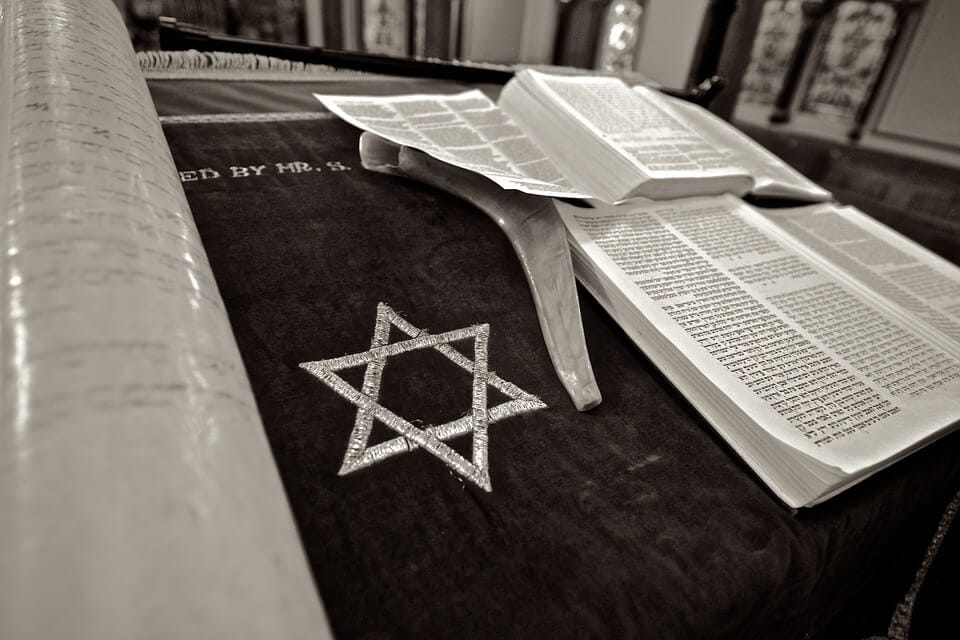
The Star of David is a six-pointed star that can be seen on Jewish tombstones, synagogues, and is even featured on the flag of Israel. The star symbolizes the legendary shield of the Biblical King David after whom it was named.
Also known as the Shield of David, a reference to the protection God provided David and his people, the symbol holds much significance in Judaism.
The three points on one side of the star represent revelation, redemption, and creation while the three on the opposite side signify God, Man, and the World.
The Star of David is also believed to represent the entire universe with each of its points signifying a different direction: east, west, north, and south.
As mentioned in the Kabbalah, an aspect of the Jewish tradition that deals with the mystical interpretation of the Bible, the six points and the center of the Star represent kindness, perseverance, harmony, severity, royalty, splendor, and foundation.
8. The Ahimsa Hand
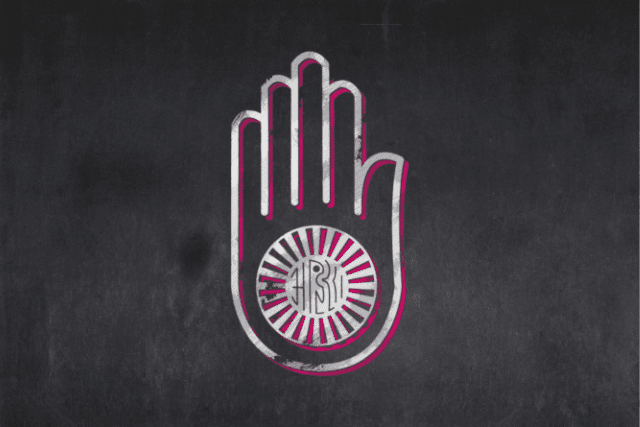
The Ahimsa hand is an important religious symbol in Jainism, signifying an ancient Indian principle – the Ahimsa Vow of non-violence and non-injury. It features an open hand with the fingers close together, a wheel depicted on the palm, and the word Ahimsa in its center.
The wheel is the dharmachakra, which represents the resolve to end reincarnation through the continuous pursuit of Ahimsa.
To the Jains, the purpose of ahimsa is to break away from the cycle of reincarnation which is the ultimate goal of the religion. It’s believed that following the concept of ahimsa will prevent the accumulation of negative karma.
As a symbol, the Ahimsa hand represents unity, peace, longevity, and prosperity for the Jains as well as for anyone who agrees with its teachings, and every living being. It is somewhat similar to the healing hand symbol, which features a hand with a spiral depicted on the palm.
9. The Star and Crescent
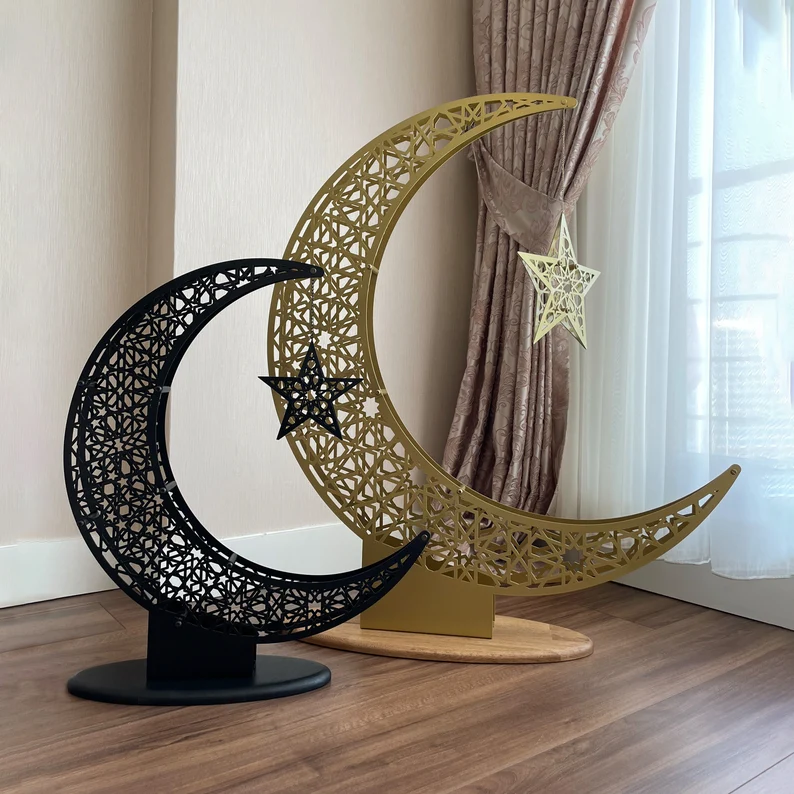
Although associated with Islam, the Star and Crescent symbol has no spiritual connection to the Islamic faith and is not mentioned in the holy books nor used when worshipping.
The symbol has a long and convoluted history, and its origins are debated. However, it became associated with Islam during the time of the Ottoman Empire, when versions of it were used in Islamic architecture.
Eventually, the symbol became used as a counter-emblem to the Christian cross during the Crusades.
Today, the Star and Crescent symbol can be found on the flags of several countries including Turkey, Azerbaijan, Malaysia, Pakistan, and Tunisia. It’s considered the most recognizable symbol of Islam.
10. The Dharma Wheel

The Dharma wheel is a famous symbol associated with Buddhism, representing the dharma, the basic principles of individual or cosmic existence, in the Buddha’s teaching.
The traditional wheel has eight spokes, but there are also wheels with as many as 31 spokes and as few as four.
The 8-spoked wheel is the most well-known form of the Dharma wheel in Buddhism. It represents the Eightfold Path which is the way to attain Nirvana through the rightness of livelihood, belief, speech, action, thought, effort, meditation, and resolve.
The wheel also symbolizes rebirth and the endless cycle of life, while its hub represents the moral discipline necessary to stabilize one’s mind.
The rim of the wheel is symbolic of mental concentration which is required to hold everything together in place.
11. Taiji Symbol (Yin and Yang)
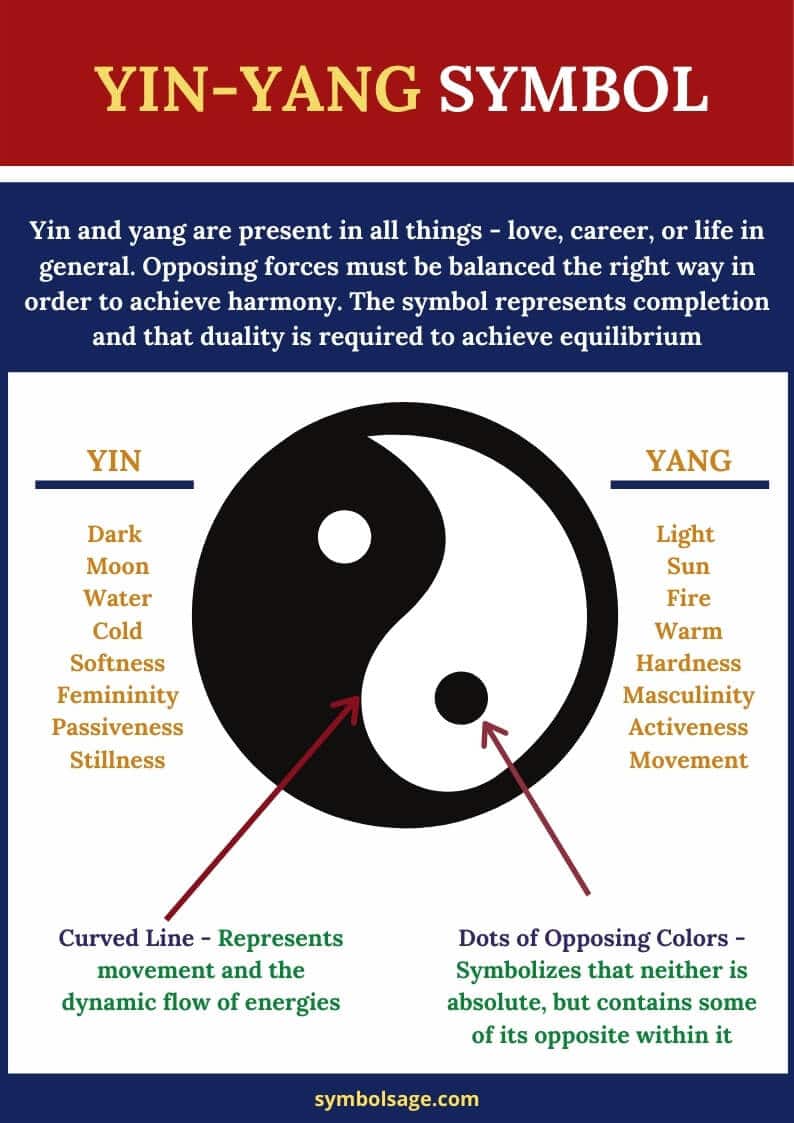
The symbol of the Yin and Yang concept consists of a circle with two swirling sections inside it, one black and one white. Rooted in ancient Chinese philosophy, it’s a prominent Taoist symbol.
The white half of the Yin Yang is the Yan-qi which represents masculine energy, while the black section is the Yin-qi, the feminine energy. The way the two halves are swirled around each other shows a continuous, fluid movement.
The white half contains a small black dot, while the black half also has a white dot at the center, symbolizing duality and the concept that opposites carry the seed of the other. This shows that both halves are dependent on one another, and one cannot exist on its own.
12. Khanda
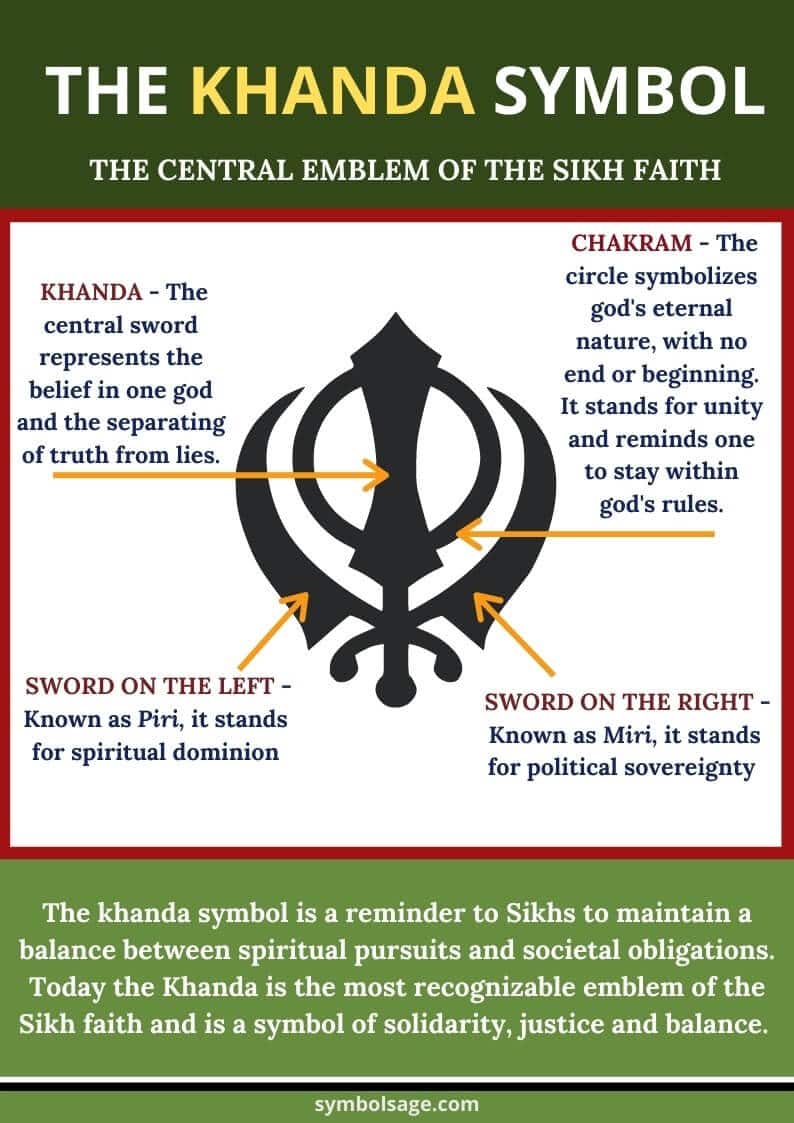
A well-known symbol in Sikhism, the Khanda is made up of a double-edged sword with a circle around its blade, placed between two single-edged swords.
The circle, which has no beginning or end, signifies that God is one while the two swords on either side symbolize the political and spiritual powers that go hand in hand. It suggests that one must choose to fight for what is right.
The Khanda symbol was introduced in its current form in the 1930s, around the time of the Ghadar Movement, where expatriate Indians sought to overthrow British rule in India.
Since then, it has been a popular symbol of Sikh faith as well as the Sikh military emblem.
13. Om
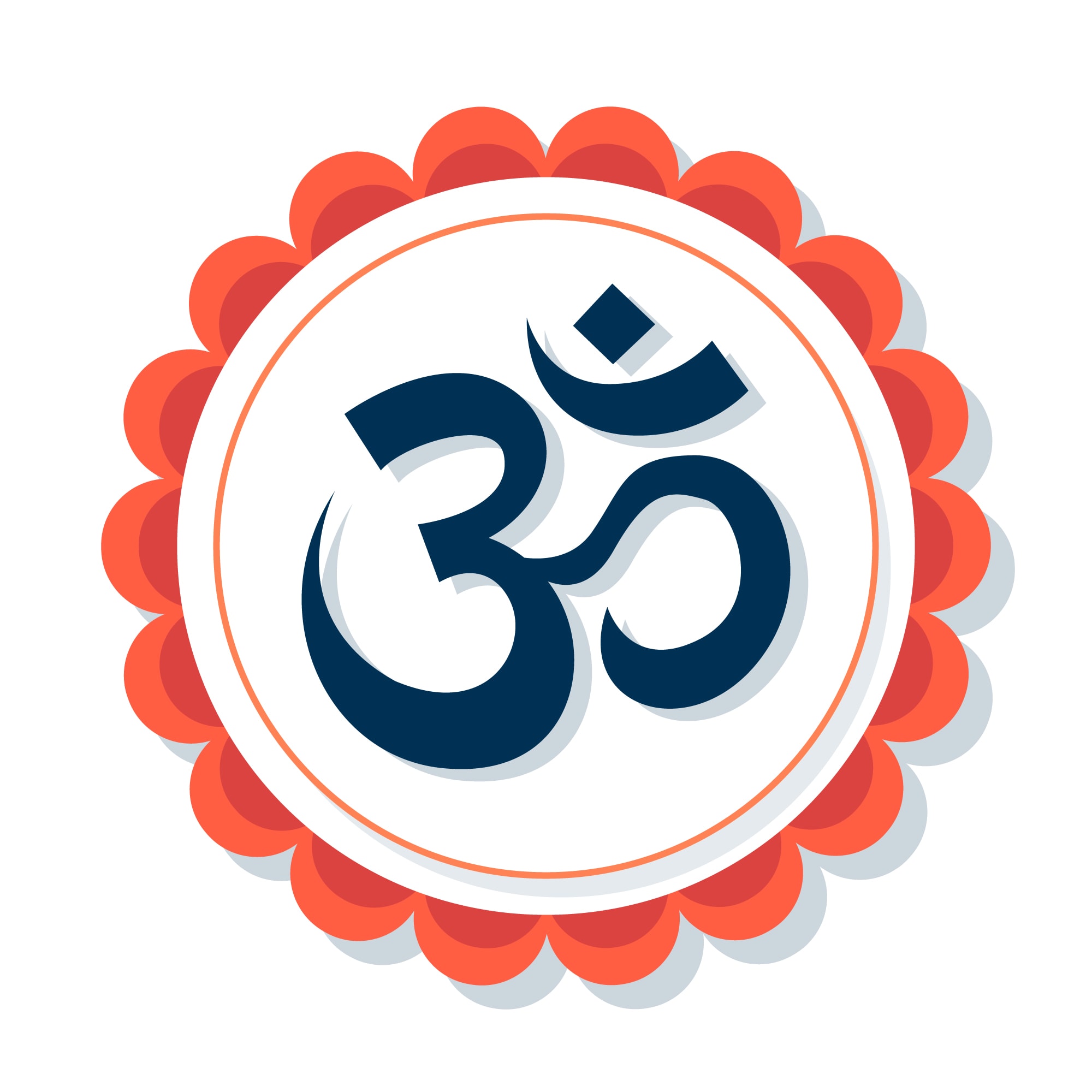
One of the most important symbols in Hinduism, Buddhism, and Jainism, Om is a Sanskrit word, a sacred, mystical incantation, which typically appears at the beginning or end (or both) of many Sanskrit prayers, recitations and texts.
According to the Mandukya Upanishad, the sacred sound ‘om’ is the single eternal syllable that includes the past present and future along with everything that exists beyond.
The symbol accompanying the sound is used to represent Brahman, the Supreme Being or God for the Hindus who are the source of all life and cannot be fully perceived.
14. The Torii Gate

Torii gates are some of the most recognizable Japanese Shinto symbols, marking the entrance to the shrines. These gates are typically made of stone or wood and consist of two posts.
Passing through a tori gate is regarded as a method of purification that is necessary when visiting a Shinto shrine.
Purification rituals play a major role in Shinto, so any visitors to the shrine would be cleansed of bad energy as they pass through the gate.
Torii gates are found in various colors but are commonly painted in a vibrant shade of orange or red, colors are believed to represent sun and life, warding off misfortune and bad omens.
15. The Swastika
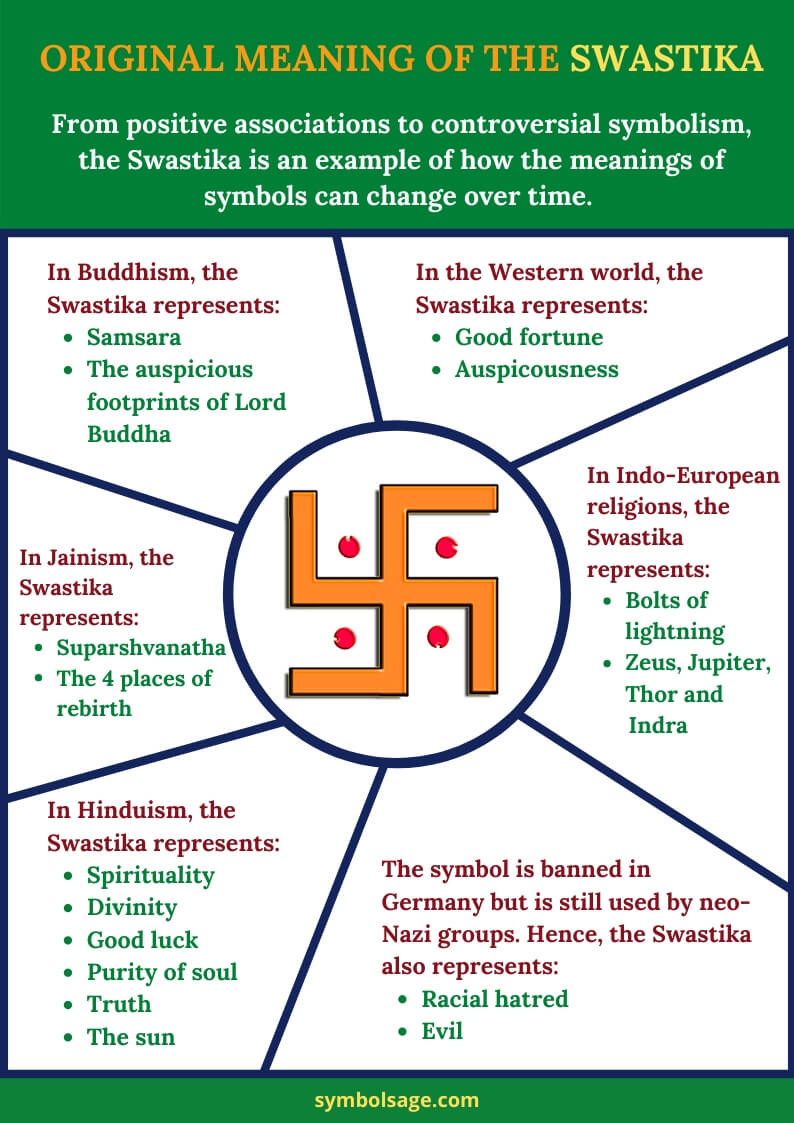
A popular symbol representing the Hindu God Ganesha, the Swastika resembles a cross with four arms bent at angles of 90 degrees. It’s typically worshipped to attract good fortune, luck abundance, plurality, prosperity, and harmony.
Some believe that the symbol signifies God and creation while others believe that the four bent arms represent the four aims of all humans: righteousness, love, liberation and wealth.
The Swastika is also thought to represent the world wheel, where eternal life alternates from one point to the other around a fixed center, or God.
Although considered a hate symbol in the West due to the Nazi appropriation of the swastika, it has been considered a noble symbol for thousands of years, and continues to remain so in Eastern cultures.
In Brief
The symbols on this list are a few of the most well-known symbols of God. Some of these started out as completely different symbols that had nothing to do with religion. While others were initially used in one religion but were later adopted by another.
Today, they continue to be some of the most recognized and respected symbols that represent God used across the globe.
Similar Articles:
10 Popular Christian Symbols – History, Meaning, and Importance
10 Most Common Spiritual Symbols – Meanings & Importance
11 Powerful Symbols of Baptism and What They Mean
15 Powerful Bible Symbols and Their Meanings
11 Powerful Healing Symbols and Their Meanings (With Images)
25 Powerful Eternity & Immortality Symbols (With Meanings)
